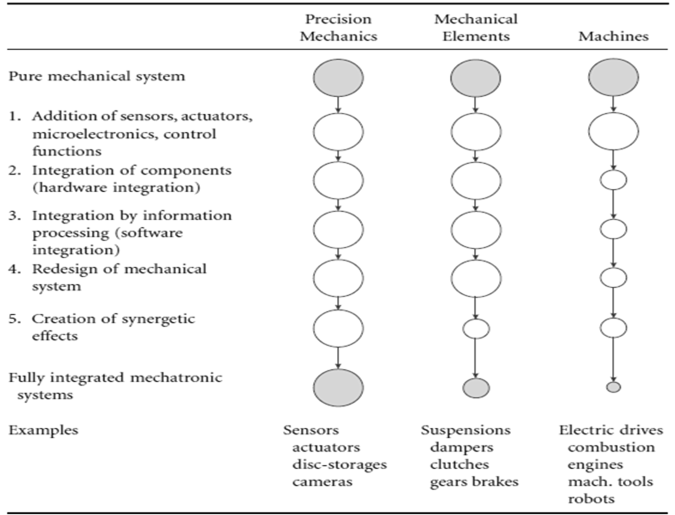SKEDSOFT
Concurrent Design Procedure for Mechatronic Systems
The design of mechatronic systems requires a systematic development and use of modern design tools.
Design Steps
Table shows five important development steps for mechatronic systems, starting from a purely mechanical system and resulting in a fully integrated mechatronic system.
Depending on the kind of mechanical system, the intensity of the single development steps is different. For precision mechanical devices, fairly integrated mechatronic systems do exist.
The influence of the electronics on mechanical elements may be considerable, as shown by adaptive dampers, anti-lock system brakes, and automatic gears. However, complete machines and vehicles show first a mechatronic design of their elements, and then slowly a redesign of parts of the overall structure as can be observed in the development of machine tools, robots, and vehicle bodies.
Required CAD /CAE Tools
The computer aided development of mechatronic systems comprises:
1. Constructive specification in the engineering development stage using CAD and CAE tools,
2. Model building for obtaining static and dynamic process models,
3. Transformation into computer codes for system simulation, and
4. Programming and implementation of the final mechatronic software.
A broad range of CAD/CAE tools is available for 2D- and 3D-mechanical design, such as Auto CAD with a direct link to CAM (computer-aided manufacturing), and PADS, for multilayer, printed-circuit board layout. However, the state of computer-aided modeling is not as advanced.
Object-oriented languages such as DYMOLA and MOBILE for modeling of large combined system. These packages are based on specified ordinary differential
Steps in the Design of Mechatronic Systems
